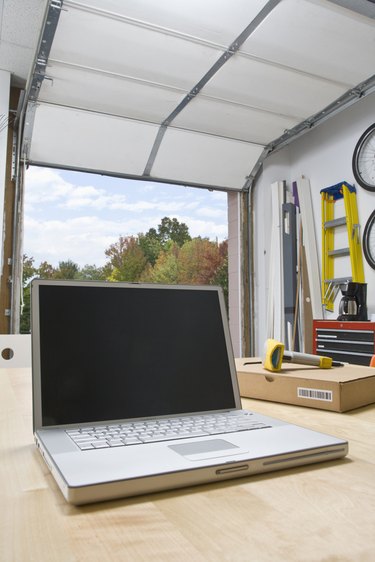
Few things are as heart-stopping as a laptop screen that suddenly and inexplicably goes black. Odds are you'll figure out pretty quickly if it's due to a loss of power, such as from a dead battery or power outage. But other causes could be more serious, such as a disconnected video cable or bad components.
Lights Out
Video of the Day
Look closely at your screen -- really closely -- and see if there's a faint image. Sometimes what appears to be a black screen at a cursory glance is actually a really dim one. This occurs when one of the components behind the screen fails. The FL inverter board converts the low voltage from the laptop into the higher voltage necessary to power the backlight bulb. If the inverter fails, or if the backlight bulb burns out, there'll still be an image on the screen, but without the light it will appear very dim.
Video of the Day
Loose Connections
A video cable connects the laptop's LCD screen to the machine's motherboard. These connections are typically snug and tight, but rough handling or a defect in the components can cause the cable to come loose. Without a connection, the screen appears completely black. This is easy to diagnose by connecting an external monitor to your laptop. If you get a picture on the external monitor, the fault lies with the laptop monitor or its connection to the motherboard.
Bad Components
Various components are required to make your laptop produce an image on the screen, specifically the video card and motherboard. If either of these goes belly up, your screen will remain dark. Faulty RAM can cause display issues as well, which can be fairly easy to pinpoint if the screen went dark right after installing a new RAM module. Remove the new RAM and see if the problem persists. An external monitor also helps confirm or eliminate the possibility of a faulty internal component.
Repair
Laptop computers, with their thin profiles and tightly-packed innards, are not meant for inexperienced disassembly and poking around. One wrong move could be disastrous. Seek the help of a service professional with experience in laptop repair. The fix could be as simple as the reconnection of a loose cable, or as complex as replacement of the entire LCD screen assembly. If the motherboard or video card is at fault, you may need to have the entire board replaced.